Places
Minshara Class

Earth (ENT-78)
Vulcan designation for a planet suitable for humanoid life. Upon encountering a new planet in 2151, T’Pol suggested launching automated probes to the surface to ascertain whether or not it was Minshara-class.[2] Presumably, the term was the origin for the later Class-M designation.[1]
References
- 1. “The Cage.” Star Trek, Episode 0. Television. 1965 (Unaired).
- 2. “Strange New World.” Star Trek: Enterprise, Episode 4. Television. 10 October 2001.
Micro-Singularity
Astronomical phenomenon. Captain Archer believed micro-singularities were a Vulcan myth. In 2151, the Enterprise NX-01 detected unusually charged particles that T’Pol considered evidence of micro-singularities. The phenomenon is also known coloquially as a “tiny black hole.”[1]
References
Mercury
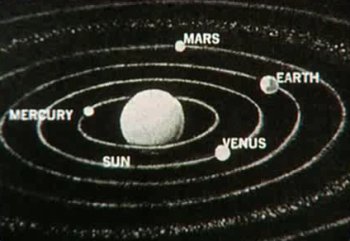
Sol System (TOS-00)
Mercury was the innermost planet in the Sol System. The Talosians viewed an image of the Sol System while accessing the U.S.S. Enterprise NCC-1701‘s computer.[1] Mercury, a Class-B planet, was 4878 kilometers in diameter, and had surface temperatures ranging from -180°C to 430°C. Located 57,910,000 kilometers from Sol, Mercury took only 87.97 days to complete its orbit; one rotation was equal to 58.7 Earth days, and its gravity was 0.38 g. Mercury had no moons.[2]
References
Mazar
Beta Quadrant planet and the homeworld of the Mazarites, approximately five light years from Risa, and 42 light years from Earth. In 2152, the Enterprise NX-01 was ordered to pick up Vulcan ambassador V’Lar on Mazar. V’Lar was on a mission to expose corrupt government officials, but when her plan was exposed, the Enterprise found itself being chased by Mazarite ships.[1]
References
Matalas
Site of a refugee camp where Dr. Phlox once felt overwhelmed by 50 patients, prior to his assignment to the Enterprise NX-01.[1]
References
Mars
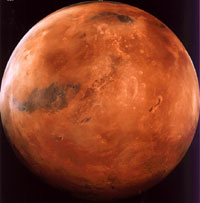
Mars (STSC)
Mars was the fourth planet in the Sol System. The Talosians viewed an image of the Sol System while accessing the U.S.S. Enterprise NCC-1701‘s computer in 2254.[1] Mars was colonized by Humans in 2103.[3] By 2155, terraforming efforts had brought the planet’s original Class-K atmosphere[6] to the verge of breathability.[4] By the 24th century, Mars had become a Class-M planet.[5] Mars had a diameter of 6790 kilometers and took 24 hours 37 minutes to complete one rotation; gravity was 0.38 g. Mars was located 227,940,000 kilometers from Sol and took 686.9 days to complete one revolution around the star. Mars had two asteroidal moons, Phobos and Deimos.[6] Orbital facilities included the Utopia Planitia Fleet Yards.[2]
References
Marrat Nebula
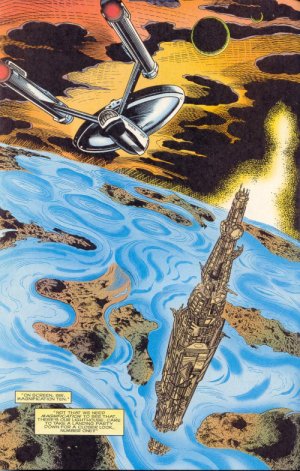
Marrat Nebula (EV MVL #2)
A treacherous expanse of charged gas clouds and ion storms where privateers and brigands would prey on commercial traffic. Notable landmarks include Starbase 13 and Pharos.[1]
References
Marin County Ship Yards
Shipbuilding facility orbiting the planet Earth, with offices on the surface in Marin County, California. The U.S.S. Pasteur NCC-58925 was built there.[1]
References
- [1]TNG-277-278: All Good Things…
Maluria
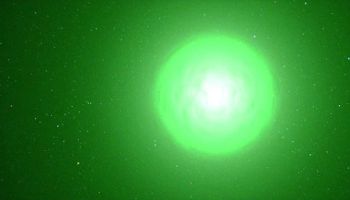
Malurian system sterilized (TOS-37)
The Malurians, a warp-capable species that in 2151 secretly mined the Akaali homeworld for veridium,[2] came from this Beta Quadrant world, which orbited the star Epsilon Fornacis and was located approximately 47.5 light years from Earth.[3] In 2267, the planet was cleansed of all life by Nomad,[1] nearly driving the Malurians into extinction.[4]
References
- 1. “The Changeling.” Star Trek, Episode 37. Television. 29 September 1967.
- 2. “Civilization.” Star Trek: Enterprise, Episode 9. Television. 14 November 2001.
- 3. “Star Trek: Star Charts.” Star Trek (Uncategorized). Book. Pocket Books. October 2002.
- 4. “Communications Breakdown.” Star Trek: The Manga – Kakan Ni Shinkou. Comic Book. TokyoPop. September 2007.
Luna
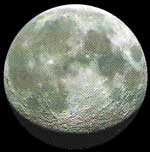
Luna (STSC)
Luna, commonly known simply as “the Moon,” was a Class-D world orbiting Earth.[4] By the late 24th century, more than 50 million people lived on the Moon.[3] The Talosians viewed several images about Earth’s Moon and programs to study and explore it while accessing the U.S.S. Enterprise NCC-1701‘s computer in 2254.[1] The Copernicus Ship Yards were located in orbit, with office facilities on the surface; the U.S.S. Hathaway NCC-2593 was built there.[2] Other points of interest on the Moon included Tranquility Base, where Apollo 11 landed in July 1969; as well as Lake Armstrong and New Berlin.[3] See also: Apollo program, Armstrong, Neil, Kennedy, John F., Lunar probe, Ranger probe.
References
Categories
- Animated Series (60)
- Articles (28)
- Books (447)
- Cast & Crew (79)
- Comics (22)
- DS9 (328)
- Early Voyages (125)
- Education (5)
- Enterprise (373)
- Excelsior (36)
- Food (19)
- Games (223)
- Klingon (70)
- Library (1,543)
- Logs (593)
- Lost Era (55)
- Medicine (18)
- Merrimac (1)
- Mirror (35)
- Miscellaneous (13)
- New Frontier (54)
- Next Generation (635)
- Original Series (681)
- Personnel (436)
- Places (369)
- Politics (12)
- Recreation (10)
- SCE (41)
- Science (1)
- Shatnerverse (9)
- Ships (455)
- Site Updates (98)
- Starfleet Academy (86)
- Stargazer (42)
- STO (61)
- Technology (45)
- Titan (59)
- To Boldly Go (1)
- TV/Film (214)
- Uncategorized (4)
- Vanguard (76)
- Voyager (236)
- Weapons (27)
- Xenology (54)